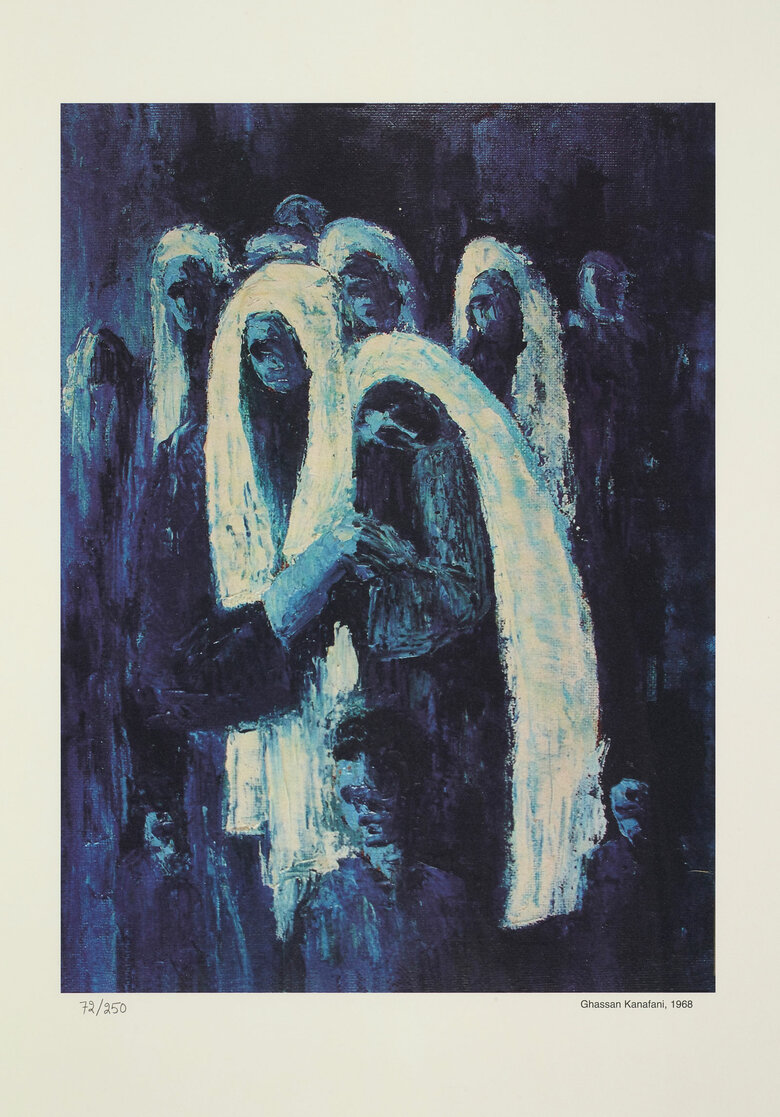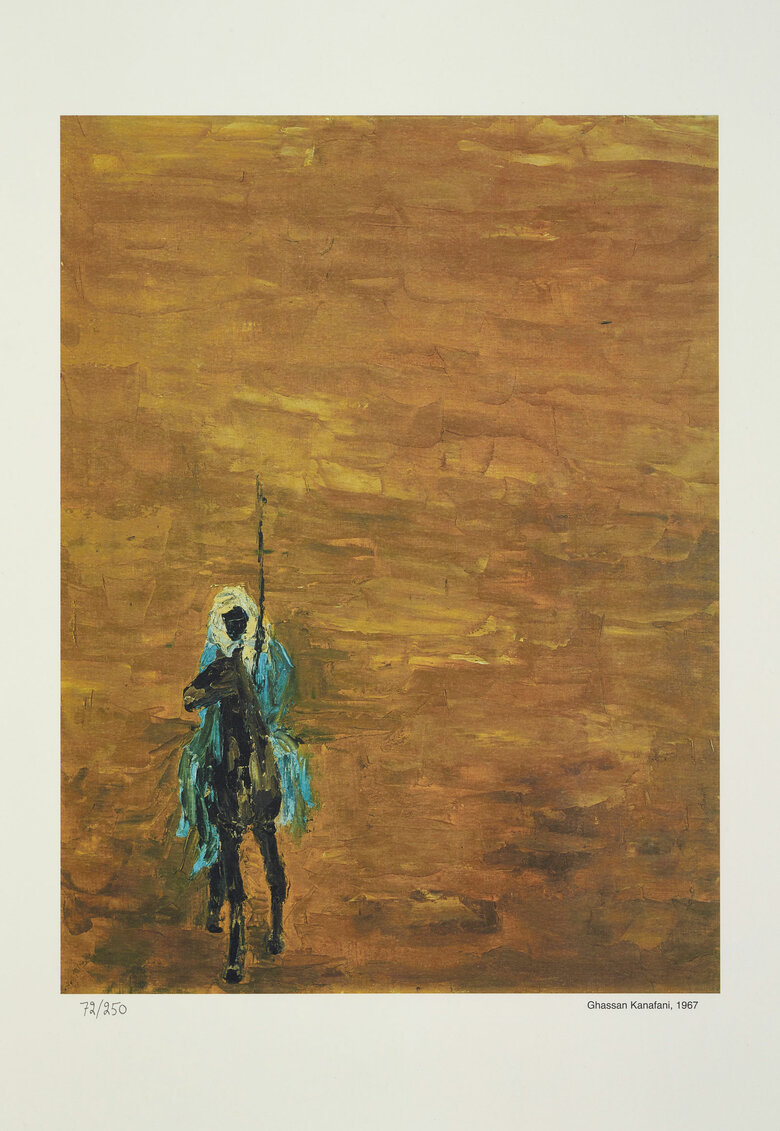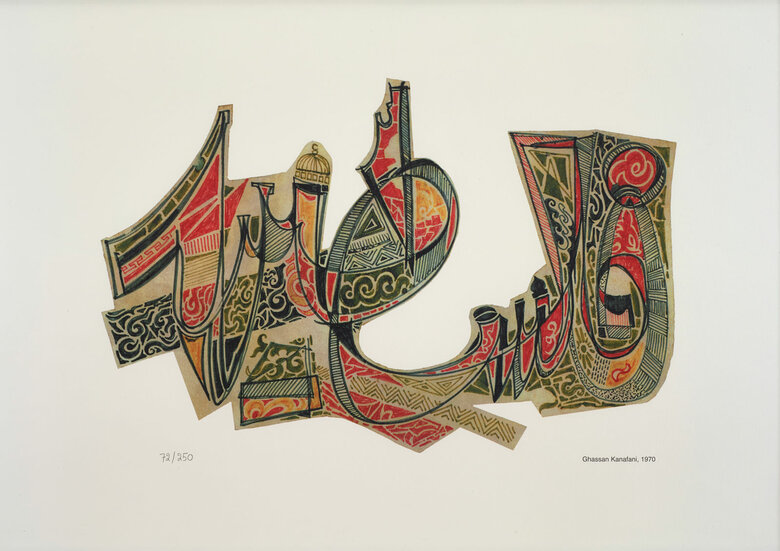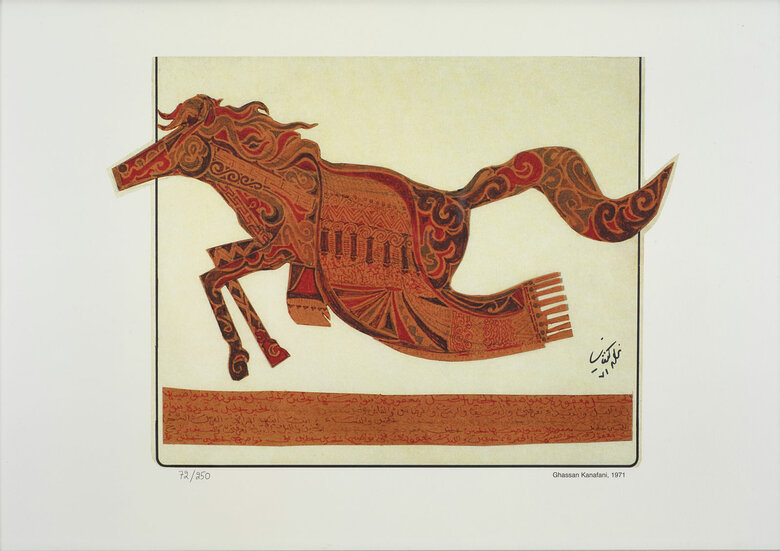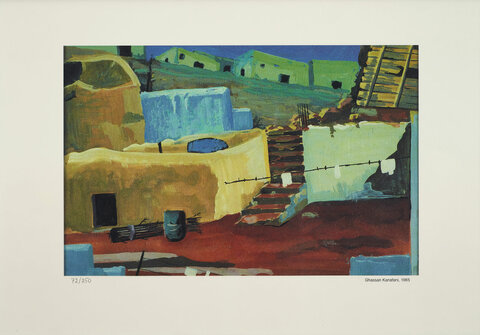Ghassan Kanafani was a Palestinian novelist, short story writer, journalist, visual artist, and political activist whose powerful voice helped shape modern Arabic resistance literature. He was born...
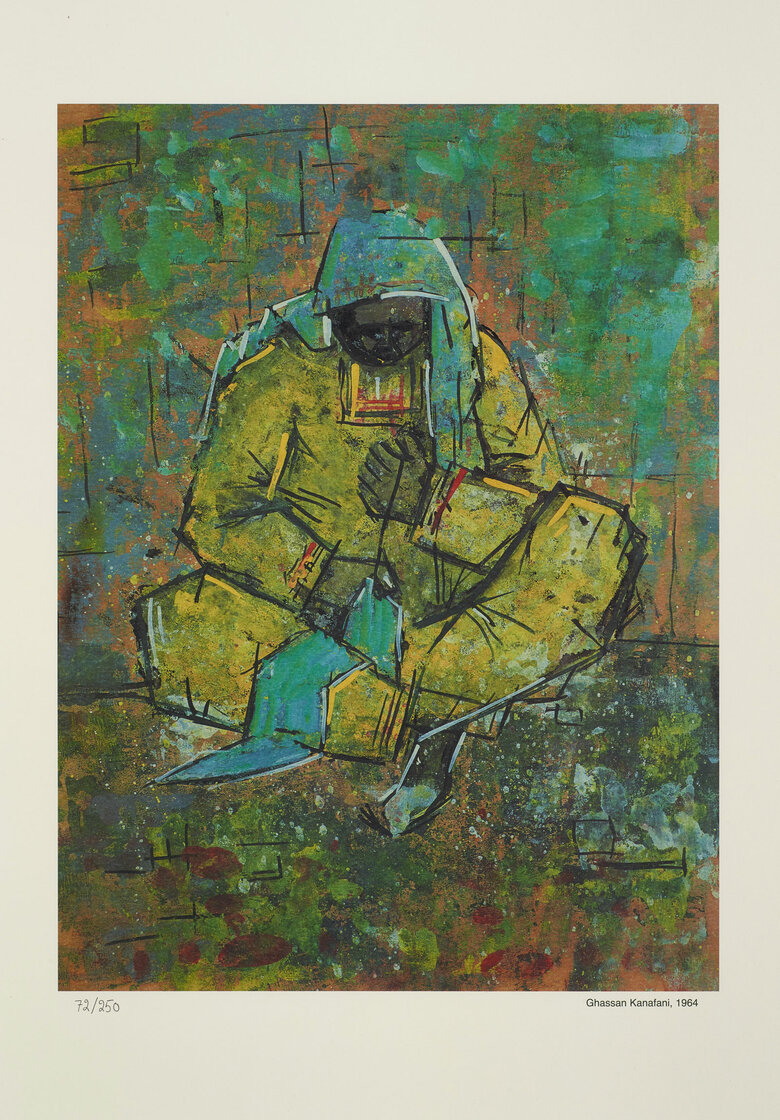


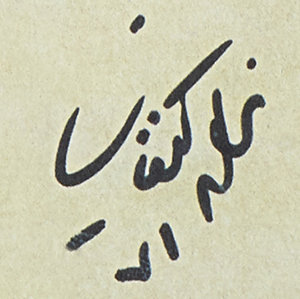

Ghassan Kanafani was a Palestinian novelist, short story writer, journalist, visual artist, and political activist whose powerful voice helped shape modern Arabic resistance literature. He was born...
Ghassan Kanafani was a Palestinian novelist, short story writer, journalist, visual artist, and political activist whose powerful voice helped shape modern Arabic resistance literature. He was born in 1936 in Acre, then part of Mandatory Palestine, and grew up in a middle-class household that valued education and civic engagement. The cataclysm of the 1948 Nakba forced his family into exile in Damascus, Syria. This became the defining trauma and the main inspiration for his creative and political commitments.1 In Damascus, Kanafani completed his secondary schooling in 1952, witnessing firsthand the hardships faced by displaced Palestinians and developing a strong sense of cultural urgency.
In 1953, Kanafani enrolled in the Arabic Literature Department at the University of Damascus, where he studied both classical and modern Arabic literary movements. At the same time, he taught art in United Nations Relief and Works Agency (UNRWA) schools, working with refugee children and developing a parallel practice in drawing and illustration. This mix of cultural teaching and artistic exploration was already closely linked to his political activism. By 1955, Kanafani was expelled from the university because of his membership in the Movement of Arab Nationalists2, reflecting his belief that education, literature, and political action belonged together.
In 1956, Kanafani moved to Kuwait, where he kept teaching and took on the role of editor at Al-Rai newspaper. This was an important platform that supported Arab nationalist and anti-colonial movements across the region. In 1960, he relocated to Beirut, which was a hub for revolutionary thought at the time. There, he worked for Al Hurria and later Al Muharir, writing articles and short stories that energized a growing Arab cultural movement.3 Beirut during these years was a testing ground for radical intellectuals and artists, and it gave Kanafani the space to sharpen his distinctive modernist narrative style.
In 1963, Kanafani published Men in the Sun,4 a modernist novella known for its simple, stripped-down language and stark imagery. Its style reflected the same sharp, minimal lines often found in his drawings. The story of refugees suffocating in a water tanker, told with layered symbolism and quiet tension, connects directly to the themes of loss and confinement that also appear in his art.
Beyond fiction, Kanafani also built a strong visual practice. His surviving sketches and ink drawings are expressive, often showing refugees in fractured, semi-abstract lines. One untitled drawing from 1965, kept in private family collections, shows a mother with hollow eyes holding a child who clings to her scarf. It is drawn with quick, jagged strokes and muted colors that heighten their sense of loss and tension. Another drawing from 1969, published in a Popular Front for the Liberation of Palestine pamphlet, shows a kneeling figure surrounded by broken Arabic calligraphy that spells out “Right of Return.” Here, political text and human form are blended to underline the historical and moral claims of Palestinians in exile.5
Kanafani’s art style used modest, accessible materials like pencil, ink, and pen on simple paper. This reflected the practical limits of life in exile and showed his commitment to making art for the people rather than for elites. His technique mixed quick, expressive lines with areas of shading that gave a sense of urgency and tension. In his compositions, he often chose stark, frontal figures and repeated images of mothers, children, and fighters, drawn in semi-abstract outlines to highlight shared struggle and universal themes. When he included calligraphy, Kanafani wove Arabic letters into the figures or objects, linking words and images in a kind of visual storytelling that matched his literary style. His work showed a raw honesty and an urgency that mirrored the harsh conditions of occupation and resistance.
After joining the Palestine Liberation Organization in 1964, Kanafani saw his creative work more and more as part of a wider resistance culture. The Arab defeat in the 1967 Six-Day War became a turning point. His writing shifted from despair to a sense of revolutionary hope. In 1969, he co-founded the Popular Front for the Liberation of Palestine (PFLP), where he served as spokesperson and editor of its newspaper, al-Hadaf. Through al-Hadaf, he promoted a new kind of “resistance aesthetics” that brought together literature and graphic art to support the liberation movement.6
Two of Kanafani’s artworks in the Ramzi and Saeda Dalloul Art Foundation collection show the range and depth of his visual style.7 In the acrylic painting, Women, 1968, a group of female figures wearing white veils, stand close together in a dark, blue-toned space. Their faces are partly hidden or turned away, and their bodies seem to blend into one another. The painting has a quiet, heavy atmosphere. It suggests grief, waiting, or shared sorrow. Kanafani used broad brushstrokes and deep color contrasts to create a strong visual rhythm. The second piece, Untitled, 1970, is a large drawing of the word “فلسطين” (“Palestine”) in stylized Arabic calligraphy. The letters are filled with red, green, and black patterns, echoing the Palestinian flag. The artwork mixes design and message, turning the name of his homeland into a bold visual statement. These two pieces, one emotional and one declarative, show how Kanafani used both image and text to speak about struggle, identity, and belonging.
Kanafani’s artworks were not formally exhibited while he was alive, but they have since been shown in heritage and cultural projects, such as the Palestinian Cultural Memory Project in Beirut in 2018.8 His work has also been included in informal exhibitions and educational displays across Palestinian refugee camps since the 1990s. These drawings, together with his literary work, still stand as powerful portrayals of dignity in the face of oppression.
Kanafani’s influences were rooted in the trauma of the Nakba, shaped by Arab nationalist thought, and deepened through solidarity with global anti-colonial movements from Algeria to Vietnam. His modern narrative style, enriched by Arabic storytelling traditions and bold, experimental forms, made him one of the most important writers of his time. His images of exile, whether drawn or written, remain lasting symbols of Palestinian resistance, identity, and cultural memory. His works have been translated into seventeen languages and published in more than twenty countries, showing their broad impact and ongoing relevance.9
On July 8, 1972, Ghassan Kanafani was killed in Beirut by a car bomb planted by the Israeli Mossad. This was an attack that also took the life of his niece, Lamees. Though his life ended at thirty-six, his legacy continues through reprints, studies, exhibitions, and festivals, confirming his place as one of Palestine’s most influential cultural figures, who brought art, literature, and politics together in a clear vision of liberation.
Edited by Elsie Labban
Notes
1 Institute for Palestine Studies, “Ghassan Kanafani Biography,” Palquest, accessed June 30, 2025, https://www.palquest.org/en/biography/6566/ghassan-kanafani.
2 Popular Front for the Liberation of Palestine, Memorial Pamphlet for Ghassan Kanafani (Beirut, 1973).
3 Jadaliyya, “Ghassan Kanafani: A Revolutionary Life,” accessed June 30, 2025, https://www.jadaliyya.com/Details/30723.
4 Ghassan Kanafani, Men in the Sun, trans. Hilary Kilpatrick (Boulder: Lynne Rienner Publishers, 1999).
5 Middle East Eye, “The Life and Legacy of Ghassan Kanafani,” accessed June 30, 2025, https://www.middleeasteye.net/discover/ghassan-kanafani-palestine-life-writer.
6 Pluto Books, “Ghassan Kanafani: Palestine’s Life Writer,” accessed June 30, 2025, https://www.plutobooks.com/9780745349374/ghassan-kanafani/.
7 Ramzi and Saeda Dalloul Art Foundation, “Collection Highlights: Ghassan Kanafani Sketches,” accessed June 30, 2025, https://dafbeirut.org/en/collection.
8 Ahmad Al-Hroub, Ghassan Kanafani and the Rise of Palestinian Resistance Literature (Exeter: University of Exeter, 2017).
9 Institute for Palestine Studies, “Ghassan Kanafani,” Palestine Studies, accessed June 30, 2025, https://www.palestine-studies.org/en/node/162606.
Sources
Al-Hroub, Ahmad. Ghassan Kanafani and the Rise of Palestinian Resistance Literature. Exeter: University of Exeter, 2017.
Dalloul Art Foundation. “Collection Highlights: Ghassan Kanafani Sketches.” Accessed June 30, 2025. https://dafbeirut.org/en/collection.
Institute for Palestine Studies. “Ghassan Kanafani Biography.” Palquest. Accessed June 30, 2025. https://www.palquest.org/en/biography/6566/ghassan-kanafani.
Institute for Palestine Studies. “Ghassan Kanafani.” Palestine Studies. Accessed June 30, 2025. https://www.palestine-studies.org/en/node/162606.
Jadaliyya. “Ghassan Kanafani: A Revolutionary Life.” Accessed June 30, 2025. https://www.jadaliyya.com/Details/30723.
Kanafani, Ghassan. Men in the Sun. Translated by Hilary Kilpatrick. Boulder: Lynne Rienner Publishers, 1999.
Middle East Eye. “The Life and Legacy of Ghassan Kanafani.” Accessed June 30, 2025. https://www.middleeasteye.net/discover/ghassan-kanafani-palestine-life-writer.
Pluto Books. “Ghassan Kanafani: Palestine’s Life Writer.” Accessed June 30, 2025. https://www.plutobooks.com/9780745349374/ghassan-kanafani/.
Popular Front for the Liberation of Palestine. Memorial Pamphlet for Ghassan Kanafani. Beirut, 1973.
YouTube. “Ghassan Kanafani Interviews and Documentaries.” Accessed June 30, 2025. https://www.youtube.com/results?search_query=ghassan+kanafani.
Selected Group Exhibitions
Palestinian Cultural Memory Project, Beirut, Lebanon
50 Years of Palestinian Art, Ramallah Cultural Center, Ramallah, Palestine
Community Refugee Camp Heritage Exhibitions, various venues, Lebanon
Publications
The Forbidden Flower, Beirut, Lebanon
Returning to Haifa, Beirut, Lebanon
Umm Saad, Beirut, Lebanon
All That’s Left to You, Beirut, Lebanon
Men in the Sun, Beirut, Lebanon
The Land of Sad Oranges, Beirut, Lebanon
Collected Editions and Anthologies
Resistance Literature Collection, Cairo, Egypt
Complete Works of Ghassan Kanafani, Beirut, Lebanon
Professional Activities
Official Spokesperson, Popular Front for the Liberation of Palestine, Beirut, Lebanon
Founder and Editor, al-Hadaf, Popular Front for the Liberation of Palestine, Beirut, Lebanon
Editor, Al Muharir, Beirut, Lebanon
Editor, Al Hurria, Beirut, Lebanon
Editor, Al-Rai, Kuwait
Art Teacher, United Nations Relief and Works Agency (UNRWA), Damascus, Syria
Awards and Honors
Cited in international literary conferences as a major figure of 20th-century Arabic resistance literature
Commemorative Medal, Popular Front for the Liberation of Palestine
Honored by the Palestine National Council, Algiers
Recognized by the Palestinian Writers Union, Beirut, Lebanon
Affiliations and Memberships
Member, حركة القوميين العرب (Movement of Arab Nationalists)
Member, Palestine Liberation Organization (PLO, منظمة التحرير الفلسطينية)
Co-founder and Spokesperson, الجبهة الشعبية لتحرير فلسطين (Popular Front for the Liberation of Palestine)
Collections
Ramzi and Saeda Dalloul Art Foundation, Beirut, Lebanon
Palestinian Museum, Birzeit, Palestine
Institute for Palestine Studies Archives, Beirut, Lebanon
Popular Front for the Liberation of Palestine Archives, Beirut, Lebanon
Cultural Heritage Archives of the Lebanese-Palestinian Dialogue Committee, Beirut, Lebanon
Join us in our endless discovery of modern and contemporary Arab art
Get updates from DAF
Follow Artists
Save your favourite Artworks
Share your perspectives on Artworks
Be part of our community
It's Free!
We value your privacy
TermsCookiesPrivacy Policies
Get updates from DAF
Follow Artists
Save your favourite Artworks
Share your perspectives on Artworks
Be part of our community
It's Free!
We value your privacy
TermsCookiesPrivacy Policies
Get updates from DAF
Follow Artists
Save your favourite Artworks
Share your perspectives on Artworks
Be part of our community
It's Free!
We value your privacy
TermsCookiesPrivacy Policies
If you have entered your email to become a member of the Dalloul Art Foundation, please click the button below to confirm your email and agree to our Terms, Cookie & Privacy policies.
We value your privacy, see how
Get updates from DAF
Follow Artists
Save your favourite Artworks
Share your perspectives on Artworks
Be part of our community
It's Free!
We value your privacy
TermsCookiesPrivacy Policies
